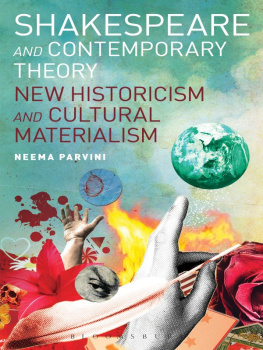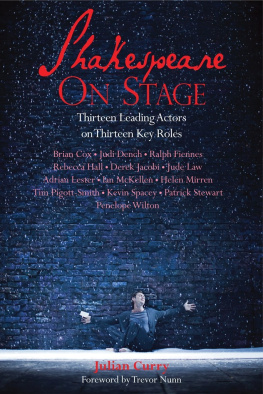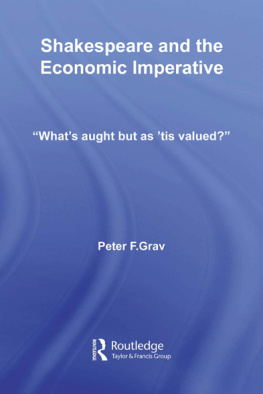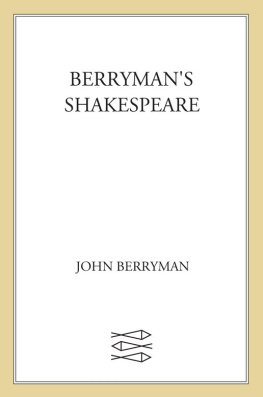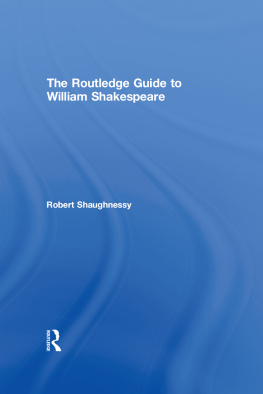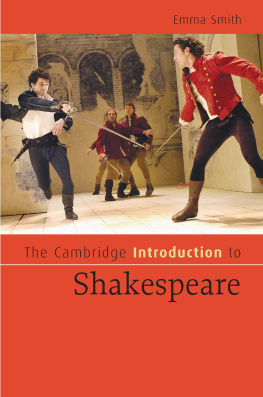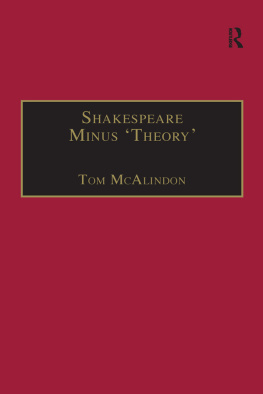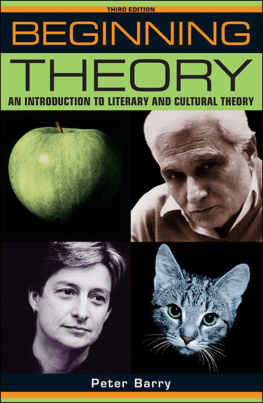Shakespeare
and
Contemporary
Theory
Related titles:
The Shakespeare Handbook , Stephen Longstaffe and Andrew Hiscock
Shakespeares Politics, Robin Headlam Wells
Shakespeare
and
Contemporary
Theory
New historicism and
cultural materialism
NEEMA PARVINI

Bloomsbury Academic
An imprint of Bloomsbury Publishing Plc
50 Bedford Square London WC1B 3DP UK
175 Fifth Avenue New York NY 10010 USA
www.bloomsbury.com
First published 2012
Neema Parvini, 2012
All rights reserved. No part of this publication may be reproduced or transmitted in any form or by any means, electronic or mechanical, including photocopying, recording, or any information storage or retrieval system, without prior permission in writing from the publishers.
Neema Parvini has asserted his/her right under the Copyright, Designs and Patents Act, 1988, to be identified as Author of this work.
No responsibility for loss caused to any individual or organization acting on or refraining from action as a result of the material in this publication can be accepted by Bloomsbury Academic or the author.
British Library Cataloguing-in-Publication Data
A catalogue record for this book is available from the British Library.
ISBN: 978-1-4411-9087-1
Library of Congress Cataloging-in-Publication Data
A catalog record for this book is available at the Library of Congress.
CONTENTS
ACKNOWLEDGEMENTS
I would like to thank Robert Eaglestone, for his help and advice; Kiernan Ryan, my mentor, for his continued support; my friends who read drafts of chapters and sent me some useful comments, and my students at Richmond American International University for doing the same; David Avital for conceiving the original concept and making this book possible, and Laura Murray and the team at Bloomsbury for their assistance during the publication process; and my parents for making the effort to read and understand the manuscript, which meant a lot to me. Finally, I would like to thank my wife, Ria, for casting her journalistic eye on what I have written and making many useful suggestions I think it is safe to say that she now understands Marxist theory very well.
A NOTE ON THE TEXTS
All references to Shakespeares plays are to Jowett, John, William Montgomery, Gary Taylor and Stanley Wells (eds), William Shakespeare: The Complete Works, 2nd edn (New York and Oxford: Oxford University Press, 2005).
TIMELINE OF THEORETICAL AND CRITICAL DEVELOPMENTS
1904 A. C. Bradley, one of the first professional literary critics, publishes Shakespearean Tragedy ushering in a period in which character analysis was the principal method of reading Shakespeares plays.
1910 Ernest Jones writes Hamlet and Oedipus taking Bradleys approach to its logical conclusion by using the theories of Sigmund Freud to psychoanalyse Shakespeares characters.
1916 The Swiss linguist Ferdinand de Saussures Course in Structural Linguistics is published posthumously; it would not have a serious impact on literary theory or Shakespeare criticism for several decades. It is also one of the most important books in the development of structuralism.
1924 I. A. Richards publishes the enormously influential Principles of Criticism, a book that advocates a formalist approach to literature laying the foundation for practical criticism and the Cambridge School led by F. R. Leavis and L. C. Knights.
1928 The Russian formalist Vladimir Propp writes Morphology of the Folktale in which he analyses the narrative functions of Russian folktales his approach would prove to be very influential later in the century, especially in the development of narratology.
1930 G. Wilson Knight takes a thematic approach to Shakespeares plays in The Wheel of Fire .
1933 L. C. Knights publishes How Many Children Has Lady Macbeth? a blistering formalist attack on A. C. Bradleys mode of character analysis.
1935 Caroline Spurgeons Shakespeares Imagery and What It Tells Us produces a taxonomy of images in Shakespeares plays; formalism is now the dominant approach in Shakespeare studies.
1943 E. M. W. Tillyards The Elizabethan World Picture, in defiance of the formalist status quo, takes a much more historical view of Shakespeares plays demonstrating how they reflect ideas that were typical of their time and place. In Britain, this approach vies with practical criticism for dominance in the Shakespeare scholarship of the 1940s and 1950s.
1947 Cleanth Brooks publishes The Well Wrought Urn signalling the dominance of The New Criticism another type of formalism in North America.
1950s dominance of formalism in North America and Europe; in Britain, while formalists following the Cambridge School are powerful they have rivals for hegemony in the form of historicists following Tillyard.
1961 A. P. Rossiters Angel with Horns is published posthumously. He takes issue with the way Tillyard assumes that Shakespeare accepted the supposed ideals of Tudor England without question and is followed in this endeavour later by, among others, Wilbur Sanders and Moody E. Prior.
1967 Roland Barthes declares the death of the author in an essay of the same name published in French. Authorial intention becomes severely discredited as a critical concept.
1969 Louis Althusser writes his enormously influential essay Ideology and the Ideological State Apparatus.
1970 Michel Foucaults The Order of Things and The Archaeology of Knowledge are translated into English and become widely read by academics in the humanities in both the United Kingdom and United States of America.
1971 Antonio Gramscis Prison Notebooks written in the 1930s while the author was imprisoned in Italy by the Mussolini regime is translated into English and made available to British scholars.
1973 The anthropologist Clifford Geertz publishes a collection of essays called The Interpretation of Cultures in which heintroduces the concepts of thick description and local knowledge, which would become key features of new historicism a decade later.
1977 Michel Foucault refines his theory of power in Discipline and Punish; he establishes the concept of Panopticism that would become key for both new historicists and cultural materialists.
1977 Raymond Williams publishes the seminal Marxism and Literature in which he first coins the phrase cultural materialism.
1980 Borrowing concepts and methodologies from Geertz and Foucault, Stephen Greenblatt introduces new historicism in Renaissance Self-Fashioning, which would prove to be one of the most influential books in the history of Shakespeare studies.
1983 Jonathan Goldberg publishes James I and the Politics of Literature, in many ways the archetypical new historicist study.
1984

